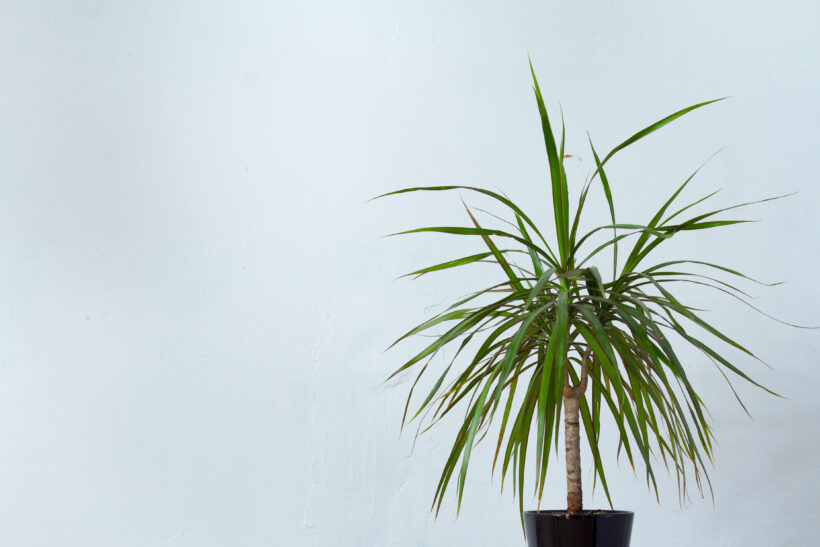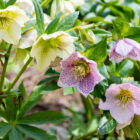
Dracaena plants – secrets and benefits for the home
Dracaena plant: origins and distribution
 Dracaena (or Dracena or Dragon Plant) is a subtropical plant belonging to the Asparagaceae family. It is one of the most widespread and popular houseplants. Its natural habitat includes the territory of tropical Africa, from Sierra Leone in the west to Ethiopia in the northeast and Malawi in the southeast. However, as it is easy to grow indoors as well. In fact, it requires a very low maintenance. It also has beautiful leaves with different colours that can match the most diverse types of furnishings. All of this makes it a popular plant among lovers of a green corner in the home.
Dracaena (or Dracena or Dragon Plant) is a subtropical plant belonging to the Asparagaceae family. It is one of the most widespread and popular houseplants. Its natural habitat includes the territory of tropical Africa, from Sierra Leone in the west to Ethiopia in the northeast and Malawi in the southeast. However, as it is easy to grow indoors as well. In fact, it requires a very low maintenance. It also has beautiful leaves with different colours that can match the most diverse types of furnishings. All of this makes it a popular plant among lovers of a green corner in the home.
What is the meaning of the dracaena?
In some cultures, such as Italy, it has the ability to bring joy and serenity to domestic environments. Its presence supposedly reduces stress, anxiety and sadness. Moreover, it has the ability to absorb carbon dioxide and emit oxygen. This helps purify the surrounding air and making it healthier and more breathable.
How much water does a dracaena need?
To keep the species thriving, it is essential to pay special attention to watering the Dracaena during the growing season. It is necessary to water the plant frequently, avoiding the accumulation of stagnant water in the soil. It would be advisable to allow the first two centimetres of soil to dry completely before watering again. You can also hydrate the plant by soaking the pot up to the rim in a basin twice a month. Afterwards, it is important to ensure that the water is drained properly. Occasionally, exposure to rain can benefit the plant by deep cleaning the leaves and removing impurities from the stomata. During periods of vegetative rest, reduce the water supply by waiting until the soil is half dry before watering.
Where is the best place for dragon plant?
 Of tropical origin, it adapts spontaneously in both African and Asian humid forests. It is an evergreen plant with a trunk that grows up to 6 metres in height in the wild, although cultivated it does not exceed 3 metres. One of its peculiarities are its very long, bare stems with leathery linear or lance-shaped leaves at the top. Furthermore, when in the wild, this plant produces flowers up to 50 cm long and with an intense, sweetish scent. There are numerous cultivars (there appear to be some 40 different species!) of dracaena. The most common ones, such as Dracaena marginata and Dracaena fragrans, also tolerate shadier locations, but this results in slower growth and a less vivid colour of the characteristic ribbon-like leaves.
Of tropical origin, it adapts spontaneously in both African and Asian humid forests. It is an evergreen plant with a trunk that grows up to 6 metres in height in the wild, although cultivated it does not exceed 3 metres. One of its peculiarities are its very long, bare stems with leathery linear or lance-shaped leaves at the top. Furthermore, when in the wild, this plant produces flowers up to 50 cm long and with an intense, sweetish scent. There are numerous cultivars (there appear to be some 40 different species!) of dracaena. The most common ones, such as Dracaena marginata and Dracaena fragrans, also tolerate shadier locations, but this results in slower growth and a less vivid colour of the characteristic ribbon-like leaves.
Can dracaena survive indoors?
Primarily considered an indoor plant, this plant can withstand minimum temperatures of around 12°C. Consequently, outdoor cultivation is only advisable in warmer regions, preferably in southern areas, and during the winter months it needs some protection with a cover. For this reason, it would be preferable to keep it at a constant temperature of between 18 °C and 21 °C in order to achieve maximum growth. At the same time, a particularly humid environment is required to promote its well-being. In fact, too dry air, especially in very hot periods, can cause dry leaves as well as stems. To help the plant at its best, it would be good to spray water on the leaves several times a day or wet the floor around the plant.
How to care for it in pots?
It is advisable to place the pot in a bright environment. A room with a southern or western exposure and large windows would be perfect. At the same time, avoid direct exposure to the sun, especially during summer. From May to September, it is possible to move the pots outside, on balconies or in the garden. In this case, to prevent sunburn, shelter the plants with light-coloured curtains, especially during the hottest hours of the day. Moreover, make sure that the location offers filtered light through thin foliage. It is advisable to rotate the pot every 15 days to encourage uniform plant growth.
Pruning
It is not necessary to prune this plant as its growth is very slow. However, pruning is possible if you wish to obtain a more compact and bushy specimen. In this case, cut one of the stems about 10 cm from the base and apply special mastic to the wound. This treatment will stimulate the formation of new lateral buds and, consequently, new branching within two months. However, damaged leaves should be removed at the base as soon as possible. In extreme cases, the entire plant can be ‘renewed’ by cutting it 10 centimetres above the ground. The top and the whole stem cut into pieces between 10 cm and 15 cm long can be used as cuttings to be planted in spring.
Pests and diseases
 Among the most common pests affecting the dracaena plants are the red spider mite, scale insects and various fungal diseases that can damage both the roots and the leaves of the plant. Scale insects can be removed manually, while to prevent mites, it is important to maintain a high ambient humidity and avoid too hot an exposure. To discourage pest attack, we recommend the use of FullBIO, whose formulation with adhesive capabilities is able to stimulate the plant’s self-defence.
Among the most common pests affecting the dracaena plants are the red spider mite, scale insects and various fungal diseases that can damage both the roots and the leaves of the plant. Scale insects can be removed manually, while to prevent mites, it is important to maintain a high ambient humidity and avoid too hot an exposure. To discourage pest attack, we recommend the use of FullBIO, whose formulation with adhesive capabilities is able to stimulate the plant’s self-defence.

On the other hand, in the case of fungal diseases, Even Green is ideal to make the plant more resistant to forms of stress.
Why Dracena leaves turn yellow?
When the full-grown dracaena loses its lower leaves, it almost resembles the appearance of a palm tree. In this case, the yellowing, the loss of bright green and the subsequent withering and dropping of the leaves in the lower part of the stem are completely natural phenomena. However, if this process also involves the younger leaves, it indicates the presence of a stress of some kind. First of all, one must identify the cause, which could for example be lack of water for excessively long periods or an environment that is too hot and dry.
What to do in case of yellow leaves?
 If these are the causes, it is necessary to check that there are no heat sources too close to the plant that tend to make the air rather dry and dry, such as a stove. At this point it is necessary to rationalise the water supply and proceed with non-excessive watering; in winter the soil can even be kept rather dry, but continue to spray the foliage every two to three days. In these cases, moving the plant to a moist environment at least in the first critical phase can help it regain its lost vigour.
If these are the causes, it is necessary to check that there are no heat sources too close to the plant that tend to make the air rather dry and dry, such as a stove. At this point it is necessary to rationalise the water supply and proceed with non-excessive watering; in winter the soil can even be kept rather dry, but continue to spray the foliage every two to three days. In these cases, moving the plant to a moist environment at least in the first critical phase can help it regain its lost vigour.
In the spring, in the period following repotting, you can move the plant outdoors, while in the summer it is best to shelter it from direct sunlight and start fertilising again. Doctor Bioges recommends the use of VerdeOK, a fast-absorbing, water-soluble fertiliser for green plants that is perfect for the balanced and flourishing growth of house plants
If you have questions or need further information, the Bioges team is always ready to assist you. You can contact us on social network or by sending an e-mail to info@bioges.com.
Stay up to date with our latest news about gardening!



